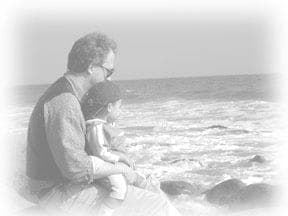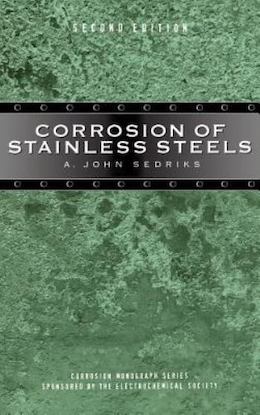
Home of the world famous 'finishing.com HOTLINE' since 1989
-----
What are the effects of chlorides and fluorides on 316 Stainless Steel?
2006
Greetings,
My name is Alex Granina and I am a nuclear valve sales engineer working for a flow control division of a corporation.
My manager gave a tough assignment that I am struggling to find an answer for. Could you be so kind as to help me with the following questions?
-Is there a temperature of exposure for which corrosion occurs, and in what type of fluid? Steam, oil, gas, water etc.?
-What must the concentration of chlorides or fluorides or Halogens be for corrosion to occur, and how long does this process take?
-What is the minimum area of contact necessary for a reaction to occur?
-How concentrated does the mixture of fluoride and chloride have to be in order to leach out and cause damage?
- Farmingdale, New York
First of three simultaneous responses --
In a forum like this it is impossible to teach about general themes, you need to pose a specific situation. All of your questions are too broad or vague to receive a precise answer. In all case the answer would be broad or vague also. The vast science of corrosion study was developed for that purpose. Maybe your manager wants you to take a minor in corrosion theory and engineering.
Guillermo MarrufoMonterrey, NL, Mexico
2006
Second of three simultaneous responses --
Dear Alex,
Why don't you refer to books and handbooks in corrosion; you may find valuable information there.
Good luck

Khair Shishani
aircraft maintenance - Al Ain, UAE
2006
Third of three simultaneous responses --
I can only relate what I know about the specific corrosion of type 304 stainless steel used for valve/pipe fittings in the nuclear PWR industry.
The primary concern in this case is for an insidious form of corrosion called Chloride Stress Corrosion Cracking, which gives little indication of crack initiation in very low Halide levels, and in the presence of tensile stress.
We use permissible levels of surface contamination on outer surfaces for combined F and Cl of 100 micrograms per 0.1 m2 maximum.
The effect is unknown below 50 degrees C.
Contact area is uncertain, but crevices are commonly found to initiate pitting and crevice corrosion, which in turn can provide sites for Cl SCC, so contact area would seem to be unimportant.
As the main preventative measure, mechanical barriers to the ingress of water are paramount.
Ship Repair - Plymouth, UK
2006
First of two simultaneous responses -- 2006
316 is an austenitic stainless steel (SS). There are 5 SS families -- austenitic, ferritic, martensitic, precipitation-hardening and duplex. Some further categories: super duplex and super austenitic. They vary in composition and microstructure and thus in response to corrosives. Corrosion resistance is also affected by cold working, heat treatment, welding, and surface treatments. About the only general statement re halogens and halides is that all stainlesses are ~resistant under anhydrous conditions -- the protective chloride or fluoride film forms on the metal, and is usually stable up to the melting point of the film. However, the presence of moisture dissolves the film, creating an acidic salt solution. Chlorides are bad, fluorides worse. Concentration, temperature, dissolved oxygen and other solutes, pH, all matter. Corrosion or pickling inhibitors may be used. Short exposure times may be used for cleaning whereas longer times may cause etching, intergranular corrosion, pitting, or other bad stuff.
Google or check books for a particular SS in a specific application.
Some Internet sources:
SS and super alloy producers (AK Steel, Allegheny Ludlum, Avesta Welding, Carpenter Technology, Haynes Intl., Nirosta, Outokumpu Stainless, Sandvik, Special Metals, Stellite, etc.) all have websites with lots of information.
Professional and trade associations:
Australian Stainless Steel Development Association http://www.assda.asn.au See 'Corrosion Resistance in Marine Environments' for a plot of pitting corrosion ranges of several common SS grades as a function of chloride concentration and temperature.
British Stainless Steel Association http://www.bssa.org.uk
Corrosion of Stainless Steels in Supply (Drinking) and Waste
(Sewage) Water Systems' gives some limits for 304 & 316 SS for use with choride- and chlorine-containing water
European Stainless Development Association http://www.euro-inox.org
Indian Stainless Steel Development Association http://www.stainlessindia.org/
International Stainless Steel http://www.worldstainless.org/
NACE International [formerly Nat'l. Assoc. Corrosion Engineers] http://www.nace.org/nace/index.asp
Nickel Institute www.nickelinstitute.org has numerous free publications, including 'Alloys to resist chlorine, hydrogen chloride and hydrochloric acid' and 'CORROSION RESISTANCE OF NICKEL-CONTAINING ALLOYS IN HYDROFLUORIC ACID, HYDROGEN FLUORIDE AND FLUORINE.'
Specialty Steel Industry of North America http://www.ssina.com/
Books (note: boss may expect learning about more than 316 SS):
Corrosion of Stainless Steels, 2nd Edn. by A. John Sedriks, ISBN: 0471007927 (1996).
Corrosion Resistance of Stainless Steels
[on
Amazon affil links] by C. P. Dillon, ISBN: 0824796292
(1995)
Corrosion of Austenitic Stainless Steels: Mechanism, Mitigation, and Monitoring, H. S. Khatak & Baldev Raj (Editors) ISBN: 0871707527 (2002).
Handbook of Corrosion Engineering by Pierre R. Roberge ISBN: 0070765162 (2000)
Corrosion,
3rd Edn., 3184 pages in 2 vols. by L. L. Shreir et al. (editors), ISBN: 0750610778 (1994)
Uhlig's Corrosion Handbook by R. Winston Revie (Editor) ISBN: 0471157775 (2000).
ASM Metals Handbook Vol. 13 'CORROSION'
⇦[this on
Amazon affil links](1987).
If you have funding, get the new, expanded version, in 3 vols.:
Volume 13A: Corrosion: Fundamentals, Testing, and Protection (2003)
Volume
13B: Corrosion: Materials 2005
Volume 13C: Corrosion: Environments and Industries (2006).
ASM Int. also has correspondence courses, e.g.,
Corrosion (15-Lesson Series)
Stainless Steels (15-Lesson Series)
NACE has an extensive education program, but mostly classroom courses.
There are many more sources and books; the above should provide a good start.
- Goleta, California
Rest in peace, Ken. Thank you for your hard work which the finishing world, and we at finishing.com, continue to benefit from.
Second of two simultaneous responses --
You ask for an amount of information that could fill a Master's Thesis in Material Science. You might want to start your project with the acquisition of one of the fine Books on this very subject available on this very website:
www.finishing.com/books/corrosionss.shtml
By the way, 316 is formulated with Molybdenum which is added SPECIFICALLY to interrupt the pitting corrosion mechanism which Chloride ion is famous for.

Dave Kinghorn
Chemical Engineer
SUNNYvale, California
2006
2006
We have some over the road tankers that have composite barrels mounted on a saddle or cradle type steel chassis. The material is 304 SS. After about 1 year over operation in HCl the frames around the welded area started cracking with some of the cracks extending into the parent metal away from but near the welds. There has been quite a bit of HCl spilled over the 304 frames.
There are 3 tankers with this problem and all in the same operation. How likely is it that the cracking is caused by excessive spilling of HCl on the frames? Typically the cracks are near heat effected areas and 1-2" long.
Thank you for your responses or ideas.
- Houston, Texas
Re HCl damage to 304 SS tank truck structure: This sounds like SCC of the HAZ. Possibly, the filler metal was 308 or 316 (or a low carbon version) so more resistant than the base metal. One of the Hastelloys (C-276, B-2, C-22) would be much better in this application. Due to the serious hazard potential and reworking costs, have the problem examined by a local metallurgical/corrosion engineer. Should be plenty in the Houston area -- headquarters of NACE International (www.nace.org).
Ken Vlach [deceased]- Goleta, California
Rest in peace, Ken. Thank you for your hard work which the finishing world, and we at finishing.com, continue to benefit from.
2006
No dead threads!
Your Q, A, or Comment puts this thread on The Finishing.com HOTLINE.
